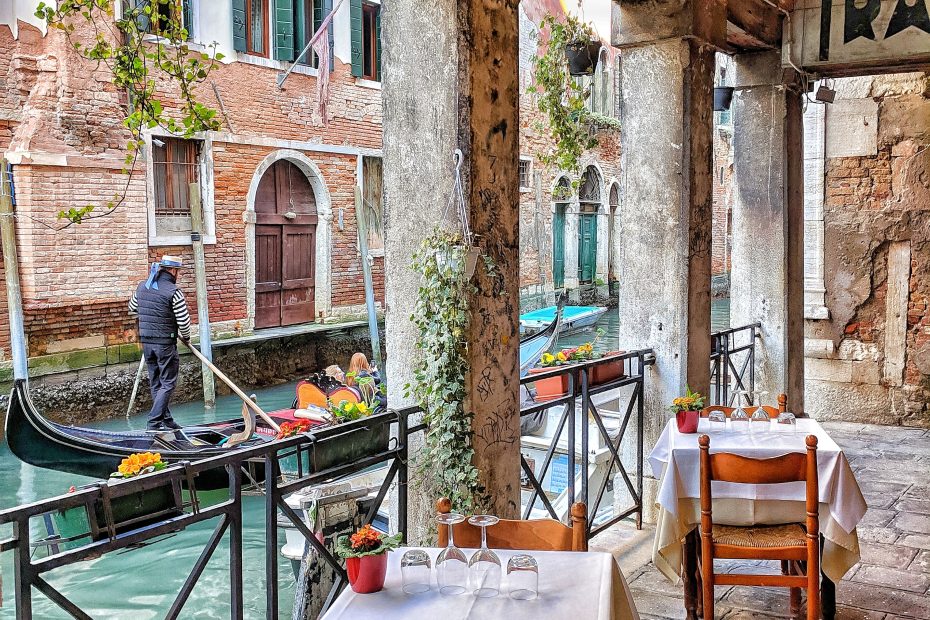Table of Contents
Introduction
Italy is a country steeped in history, home to some of the world’s most iconic historic landmarks. From the canals of Venice to the buried ruins of Pompeii, Italy offers visitors the chance to step back in time. Join me as we embark on a journey through Italy’s captivating past, exploring ancient sites that have survived the centuries. This adventure will highlight the history and key attractions of some of Italy’s most remarkable destinations.
Venice
With its winding canals, ornate bridges and grand palaces, Venice is one of Italy’s most unique cities. Venice was founded in the 5th century CE by mainlanders fleeing barbarian invasions. By the 11th century, Venice had emerged as a powerful maritime republic, controlling trade across the Mediterranean. The city reached the height of its wealth and influence in the 15th and 16th centuries. Today, Venice is an open-air museum, with its historic city centre designated as a UNESCO World Heritage Site.
Venice’s most famous landmark is St. Mark’s Square, the central gathering place lined with cafes and elegant buildings. The 900-year old St. Mark’s Basilica towers over one end, blending Byzantine and Italian architecture. At the opposite end stands the Doge’s Palace, the palatial residence of Venice’s rulers. Connecting many of Venice’s 117 islands is the Grand Canal. Lined with marble palaces, this bustling aquatic thoroughfare has served as the city’s main artery for centuries. Another iconic Venetian landmark is the Rialto Bridge, the oldest of the four bridges spanning the canal.
Florence
Moving south, we come to Florence. As the birthplace of the Renaissance, Florence abounds in masterpieces of art and architecture. Powerful families like the Medicis bankrolled the artists, architects and scholars whose work profoundly influenced Western culture. The hub of the city is the Duomo, or Florence Cathedral. Its massive dome was engineered by Filippo Brunelleschi in the 15th century and still dominates the skyline today. Beside the Duomo stands the Campanile bell tower, offering panoramic views from the top.
In the Accademia Gallery, Michelangelo’s magnificent David stands as a testament to Renaissance sculpture. The Uffizi Gallery houses one of the world’s finest art collections, including works by Botticelli, Raphael, Leonardo da Vinci and Michelangelo. Wandering the narrow streets, visitors will stumble across countless historic churches, palaces and piazzas. The Ponte Vecchio bridge still contains its jewelry shops dating back to the 16th century.
Rome
No trip to Italy would be complete without visiting its ancient capital, Rome. Once the epicenter of an empire, Rome is layered with Classical antiquities alongside monuments from later eras. One of the city’s most iconic sites is the Colosseum, the mammoth amphitheater where gladiators dueled and public events were staged. Today it is an evocative ruin, a monument to both Roman engineering and imperial spectacle.
The crumbling structures of the Roman Forum give insight into the public life of ancient Rome. Surrounding the Forum are impressive temples like the domed Pantheon, as well as triumphal arches commemorating Roman military victories. The sight of the Vittorio Emanuele II Monument and St. Peter’s Basilica dome herald your arrival in Rome’s historic center. Take in the view from the top of Michelangelo’s soaring dome at St. Peter’s, the tallest in the world.
Pompeii
Our journey through Italy’s past culminates at Pompeii near Naples. In 79 CE, Mount Vesuvius erupted and buried the seaside city in ash. The excavated ruins provide an extraordinary picture of life in the 1st century Roman world. Wandering the intact streets and buildings of this “frozen city” is an eerie experience.
In the Forum, once Pompeii’s bustling centre, you can still see the intact Temple of Jupiter and Basilica. Villas with exquisite wall frescoes, ancient baths, bakeries, food stores and workshops have all been unearthed. Of the 20,000 residents when Vesuvius erupted, many were killed and their bodies left hollows in the ash. Early excavators filled the hollows with plaster to create haunting casts of the victims in their last moments.
The Amalfi Coast
After exploring Italy’s historic sites, relax on the Amalfi Coast with its vivid blue waters and pastel villages clinging to cliffs. The town of Positano cascades down towards the sea, its whitewashed buildings and colourful domes gleaming in the sunlight. Off the coast, take a boat ride to the Emerald Grotto sea cave, where sunlight passing through an underwater cavity fills the cavern with an eerie emerald glow. The beautiful island of Capri has long attracted the rich and famous with its rugged landscapes and chic allure.
Conclusion
This journey through world-renowned destinations has underscored Italy’s rich cultural heritage. Walking in the footsteps of the ancients brings their remarkable achievements to vivid life. Beyond their historic significance, Italy’s sites remain living monuments, continuing to inspire awe and joy in all who visit. Though centuries have passed, the magic and allure of these landmarks endures.
Frequently Asked Questions
What is Italy’s most famous historic city?
Rome, the ancient capital of the Roman Empire, is Italy’s most famous historic city. As the saying goes, “All roads lead to Rome.”
Which Italian landmark attracts the most visitors annually?
The Colosseum in Rome attracts around 7.4 million visitors per year, making it the most visited landmark in Italy.
What natural disaster destroyed the ancient city of Pompeii?
In 79 CE, the catastrophic eruption of Mount Vesuvius buried Pompeii under ash and pumice stone. The city was lost for over 1,500 years until its rediscovery and excavation in the mid-18th century.
Where would you find Michelangelo’s famous David statue?
Michelangelo’s renowned marble sculpture David is housed in the Accademia Gallery in Florence. It was originally commissioned for the city’s Palazzo Vecchio in 1504.
What is the name of Venice’s famous winding waterways?
Venice is famed for its romantic canals, the most important being the Grand Canal that curves through the city centre. Smaller canals criss-cross Venice’s islands.
